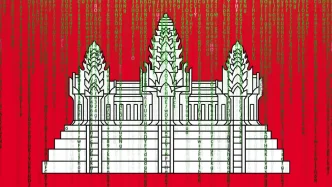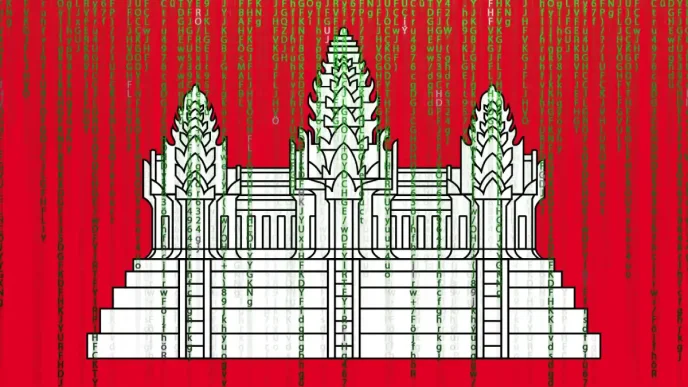Ho Chi Minh City, 24 February 2025 – In a significant display of regional solidarity, leaders from Vietnam, Laos, and Cambodia convened in Ho Chi Minh City on 22 February for a high-level meeting aimed at reinforcing their historic ties. General Secretary of the Communist Party of Vietnam (CPV) Central Committee Tô Lâm hosted President of the Cambodian People’s Party and Senate President Hun Sen, alongside General Secretary of the Lao People’s Revolutionary Party and President of Laos Thongloun Sisoulith. The summit, also attended by the prime ministers of the three nations—Phạm Minh Chính of Vietnam, Hun Manet of Cambodia, and Sonexay Siphandone of Laos—underscored a shared commitment to stability, security, and development across the region.
The meeting comes at a time of growing global and regional uncertainty, with the leaders emphasising that the fate of their nations is intertwined. Their discussions focused on reviewing past cooperation, addressing contemporary challenges, and charting a path for future collaboration among the ruling parties and governments of Vietnam, Laos, and Cambodia. This trilateral partnership, rooted in decades of traditional friendship, is seen as a cornerstone for peace and progress in mainland South East Asia.
A Foundation of Political Trust
At the heart of the summit was a reaffirmation of political trust, with the leaders stressing that the relationship between the three ruling parties—the CPV, the Cambodian People’s Party (CPP), and the Lao People’s Revolutionary Party (LPRP)—remains the guiding force for broader national ties. This political foundation has long shaped their cooperation, fostering a sense of shared purpose that dates back to their collective struggles for independence and self-determination in the 20th century.
The leaders expressed satisfaction with the steady growth of trilateral cooperation, particularly in areas such as national defence and security. They acknowledged that their collaboration has effectively addressed both traditional threats, such as border disputes, and non-traditional challenges, including cybercrime and climate change impacts. The commitment to enhanced information sharing and coordination was a key takeaway, with the leaders pledging to protect their legitimate interests while responding to common regional challenges.
Beyond security, the summit highlighted the importance of preserving and promoting the longstanding solidarity among their peoples. A particular emphasis was placed on educating younger generations about the historical ties that bind the three nations. By raising awareness of this shared heritage, the leaders hope to ensure that the spirit of unity endures, even as new geopolitical dynamics emerge.
Economic Integration as a Priority
While political and security ties have long been the bedrock of Vietnam-Laos-Cambodia relations, the leaders recognised that economic cooperation must now take centre stage. They agreed to pursue breakthroughs in integrating their economies, with a focus on transport connectivity, trade facilitation, and tourism development. These sectors, they argued, hold immense potential for mutual benefit, given the complementary strengths of the three nations.
Vietnam, with its rapidly growing economy and strategic position as a gateway to the South China Sea, offers significant opportunities for trade and investment. Laos, landlocked but resource-rich, stands to gain from improved transport links that could transform it into a regional logistics hub. Cambodia, meanwhile, brings its burgeoning tourism sector and strategic location along the Mekong River to the table. Together, the leaders envision a more interconnected economic bloc capable of competing on the global stage.
Specific initiatives discussed included accelerating cross-border infrastructure projects and harmonising trade regulations to reduce barriers. Tourism, a vital industry for all three countries, was identified as a key area for collaboration, with plans to promote joint cultural and heritage tours that showcase the unique identities of Vietnam, Laos, and Cambodia. Such efforts, if successful, could drive economic growth while fostering greater people-to-people connections.
The leaders also committed to deeper cooperation in culture, education, and scientific-technical fields. By leveraging each country’s unique strengths—Vietnam’s technological advancements, Laos’s environmental conservation expertise, and Cambodia’s cultural heritage—they aim to create synergies that benefit all parties. However, while these ambitions are promising, their success will depend on sustained political will and the ability to secure funding for large-scale projects, challenges that remain unaddressed in public statements from the summit.
Navigating a Complex Regional Landscape
The Ho Chi Minh City meeting took place against the backdrop of an increasingly complex regional and global environment. South East Asia remains a geopolitical hotspot, with tensions in the South China Sea, shifting alliances, and the growing influence of external powers shaping the strategic calculus of smaller nations. For Vietnam, Laos, and Cambodia, maintaining sovereignty and stability in this context requires not only internal cohesion but also a united front with trusted partners.
The leaders acknowledged the unpredictability of the current landscape, though they refrained from naming specific external challenges or actors. Instead, they focused on the need to deepen their partnership as a buffer against uncertainty. This approach reflects a long-standing policy of prioritising regional solidarity over entanglement in broader great-power rivalries, a stance that has historically served the three nations well.
One area of concern, though not explicitly detailed in public summaries of the meeting, is the potential for economic disparities to strain trilateral relations. Vietnam’s economic growth has outpaced that of Laos and Cambodia in recent years, raising questions about how benefits from closer integration will be distributed. If smaller economies feel marginalised, political trust could erode—a risk the leaders will need to manage carefully in the coming years. While no concrete mechanisms for addressing such imbalances were announced, the commitment to consultation and coordination suggests a willingness to tackle these issues collaboratively.
Looking Ahead to 2025 Milestones
The summit also served as an occasion for mutual congratulations and forward-looking optimism. Hun Sen and Thongloun Sisoulith extended their best wishes to Tô Lâm and the Vietnamese people ahead of significant milestones in 2025. These include the 50th anniversary of the liberation of southern Vietnam and national reunification on 30 April, the 80th anniversary of Vietnam’s National Day on 2 September, and the 135th birthday of President Hồ Chí Minh on 19 May. These events, emblematic of Vietnam’s historical journey, resonate deeply with its neighbours, who share a legacy of anti-colonial struggle and nation-building.
For Vietnam, the coming year offers an opportunity to reflect on its achievements while strengthening its role as a regional leader. The support of Laos and Cambodia, as reaffirmed in this meeting, will be crucial as Hanoi navigates domestic reforms and external pressures. For their part, Laos and Cambodia stand to benefit from Vietnam’s growing clout within ASEAN and beyond, provided they can align their national priorities with the broader trilateral agenda.
Enhancing Cooperation Mechanisms
A final point of consensus at the summit was the need to improve the efficacy of existing cooperation mechanisms while exploring new approaches to partnership. The leaders did not specify which mechanisms would be prioritised, but past frameworks—such as joint committees on border security and regular high-level dialogues—have proven effective in maintaining open channels of communication. Introducing new formats, potentially involving greater private sector or civil society participation, could further enhance the quality and efficiency of their collaboration.
Ultimately, the Ho Chi Minh City summit represents a renewed commitment to a partnership that has weathered decades of change. By prioritising political trust, economic integration, and regional stability, Vietnam, Laos, and Cambodia are positioning themselves to face future challenges together. While the path ahead is not without obstacles—ranging from economic disparities to external geopolitical pressures—the leaders’ shared vision of solidarity offers a strong foundation for progress.
As the three nations move forward, the success of their trilateral cooperation will hinge on translating these high-level commitments into tangible outcomes for their peoples. For now, the message from Ho Chi Minh City is clear: in an uncertain world, the bonds of history and friendship remain a powerful force for peace and development in South East Asia.














